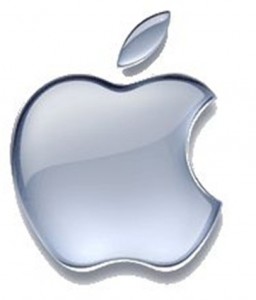 I have always been an advocate of rich multimedia applications, motion graphics, and video ever since I started to develop for the Internet in 1995. I will give a brief history that will illustrate the importance of Flash and its contribution to the web and cross-platform presentations and why Apple’s fight with Adobe is really, an Apple fight with Google.
I have always been an advocate of rich multimedia applications, motion graphics, and video ever since I started to develop for the Internet in 1995. I will give a brief history that will illustrate the importance of Flash and its contribution to the web and cross-platform presentations and why Apple’s fight with Adobe is really, an Apple fight with Google.
My First Experience
My first experience in developing a multimedia website that incorporated video was almost a disaster, as I had to ensure that both the Mac and Windows users could view the embedded videos on the website. Thus I had to encode the videos separately for each platform and browser, and also embed them using different codes, as there was no web standard for video and a common video. During that time, also, the only way to display animation in a browser was by using Java.
Some time in 1996 I discovered FutureSplash. It was the birth of my creative animation capabilities and a whole new world was opened up to me. At first I only used it for multimedia presentation purposes on the Windows platform, and one of my first projects was one for the final year students of the Jewellery Department at the Edna Manley College for Visual and Performing Arts to showcase their work to attendees at their final year presentation.
The advent of Netscape’s plug-in architecture was a turning point for the web and the ability to present motion graphics using FutureSplash was more than a dream come true for web developers, animators and designers like myself. The technology was used on several websites such as Microsoft’s MSN, Fox, and Disney’s Disney’s Daily Blast. Macromedia at this time also had the Shockwave Player and later bought FutureSplash, turning it into Macromedia Flash 1.0.
Flash Support of Peaceful Jamaican Gas Riots
 In 1999 the technology was at an advanced stage, that one was able to distribute multimedia presentations and animations via a standalone executable file on the Windows OS. During the Jamaican gas riots of the said year in April, NVI Media, an Internet Development Company that I co-owned with Marc Edwards, used the technology to create and distribute a viral presentation endorsing peaceful protests against the inflation of gas prices, which became controversial and stirred debate among the Jamaican web community at the time and also led to additional publicity for our company which we welcomed. You can view one of the comments via this link http://www.j-zone.com/riots/opinions/8_Elle.htm.
In 1999 the technology was at an advanced stage, that one was able to distribute multimedia presentations and animations via a standalone executable file on the Windows OS. During the Jamaican gas riots of the said year in April, NVI Media, an Internet Development Company that I co-owned with Marc Edwards, used the technology to create and distribute a viral presentation endorsing peaceful protests against the inflation of gas prices, which became controversial and stirred debate among the Jamaican web community at the time and also led to additional publicity for our company which we welcomed. You can view one of the comments via this link http://www.j-zone.com/riots/opinions/8_Elle.htm.
Due to the multimedia-rich presentations that we were able to create for our clients for their websites we embraced the technology 100%, and our company soon became a hit with the Flash design community through our Flash-based corporate website that was an example on the use of Flash in website design.
In December of the same year, NVI Media got the best Christmas gift by winning the Macromedia Shockwave Site of the Day (the first of three that we would get awarded for), for the website of the well-known Mystic Urchin, the first Jamaican company to get the award. The website got one million eyeballs that month.
The Debacle- Apple calls Adobe Lazy
For more than a decade Flash has been a cross-platform standard for delivering video and vector-based motion graphics on both the web and OSs. The technology has also enabled many companies to deliver rich interactive content to users that would have never been possible with the limitations of HTML.
The Flash Player is undoubtedly the leader for delivering online video across web platforms and 75 percent of video on the web is delivered by Flash. YouTube and Google Video both use Flash to deliver video.
Apple has now removed the capabilities from their devices to support the technology with claims that it is buggy and does not comply with Apple’s delivery content to their users.
Wired reported that at a “town hall” meeting Steve Jobs stated, “They are lazy. They have all this potential to do interesting things, but they just refuse to do it,” he said. “Apple does not support Flash because it is so buggy… Whenever a Mac crashes, more often than not it’s because of Flash. No one will be using Flash…The world is moving to HTML5.”
If one dissects the statement it is easy to come to the conclusion that Steve Jobs is not targeting Flash but Google and Microsoft. Google also owns YouTube and videos are presented through the Adobe Flash Player.
Has Apple worked with Adobe in fixing this issues that they have complained about?
If complaints about processor speed and lag on the Mac OS abound, and Macs are supposed to be better at processing power than PCs on the Windows platform, what are the problems?
Adobe CTO Kevin Lynch has already addressed the issue in his blog saying that Mac vector-graphic performance should improve in Flash 10.1 because of that plug-in’s use of Mac OS X’s Core Animation graphics capabilities, and that using that framework “will get us to the point where Mac will be faster than Windows for graphics rendering.”
As Lee Brimelow pointed out on The Flash Blog, one of the reasons for the poor performance of Flash on Mac is that they don’t allow third party software video rendering with low level hardware access, and they don’t allow public API to do this. He also added that this could be verified by asking Apple. Only Quicktime is capable of doing this, and this once again demonstrates the propriety attitude of Apple.
As with any technology there are always faults. The issues that surround Flash are many. However, one of the main issues is that it cannot be a standard because its implementation is proprietary.
If HTML was capable of doing everything that Flash does, then there would be no need for Flash. Also the coming HTML5 video implementation still can’t agree on a common format across browsers.
Dragging us Back to the Stone Age
I will demonstrate why Flash is important to the web and HTML 5 is not a replacement for the plug-in, but goes hand in hand with it. As of writing, the element in HTML 5 is not supported by Internet Explorer, Firefox 3.0 and Opera web browsers. Without getting too technical, video files such as AVI or MP4 can be described as a box or container that defines how data is stored in them.
Firefox 3.5 and Google Chrome 3 are the only browsers that support Theora video and Vorbis audio in an ogg container. There is no support in Apple’s iPhone and Google Android. Firefox does not support H.264 video and AAC audio in an MP4 container, while Google Chrome 3, Safari and mobile phones such as Apple’s iPhone and Google Android phones have support. Flash supports MP4.
This you can already surmise is an issue for developers that present video content on the web via browsers and handheld devices. Developers will once again have to encode videos more than once for it to be watchable across these platforms and devices.
 The reason of why Flash is important to the web is that with the use of the Flash Plug-in, developers of video content, motion graphics and applications can deliver their content across all platforms and devices without having to do multiple encoding for video, and not having to worry about HTML code that is not supported by some web browsers.
The reason of why Flash is important to the web is that with the use of the Flash Plug-in, developers of video content, motion graphics and applications can deliver their content across all platforms and devices without having to do multiple encoding for video, and not having to worry about HTML code that is not supported by some web browsers.
In conclusion there is no issue at hand with Flash as is, although there is major room for improvement.
It simply comes down to Apple not including Flash in their devices as an indirect hit at Google for encroaching into Apple’s iPhone market.
Like this post? Why not Subscribe and get Silicon Caribe by Email
Follow me on Twitter: twitter.com/SiliconCaribe

 eCommerce3 months ago
eCommerce3 months ago
7 Comments